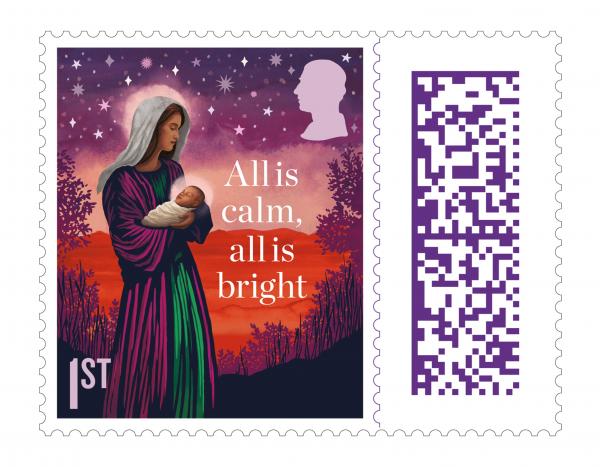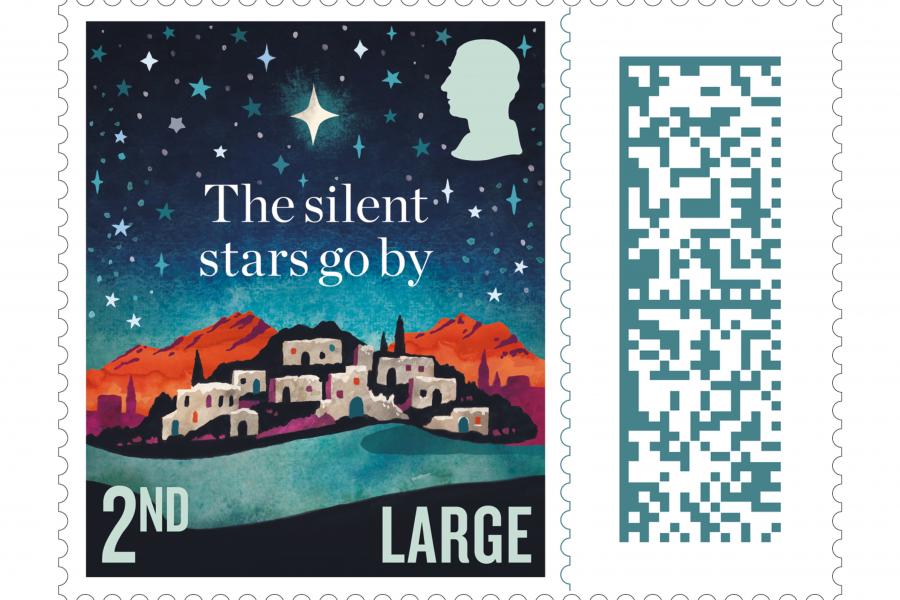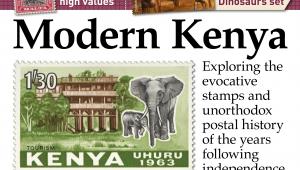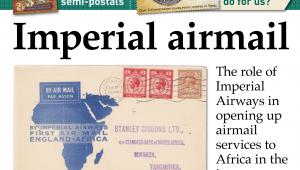Christmas 2023

Each of the five designs (one fewer than last year’s set) captures the theme of one of the most popular Christmas carols, and quotes a familiar lyric from it.
Carols have many different cultural derivations, including hymnbooks, devotional poems, monastic plainsong and folk songs. Some are closely connected to the story of the Nativity, but by no means all. Often they were intended for singing outdoors or in the pub, rather than in church.
In many cases we have no idea who wrote them, because they have been passed down to us by oral transmission and shared memory, through countless generations.
Of the British favourites whose story is known, a large number turn out to have been written and composed in other countries. Several have had music composed for them more than once, so that they have different tunes in different parts of the world.
Medieval folk songs and wassailing gave early carols some mysterious, semi-pagan imagery, before sophisticated composers turned their hands to carols from the 15th century, giving us elegant hymns to the Virgin Mary.
The English Reformation promoted psalm-singing as a social activity, but it was the high church priests of the Oxford Movement in the 19th century who collated and published many carols in the forms we know them today.
The stamps were illustrated by Tom Duxbury, designed by Steers McGillan Eves and printed in gravure by Cartor Security Printers, with data matrix codes.
They come self-adhesive in counter sheets, in a miniature sheet and (in the case of the 2nd class and 1st class values) in booklets.
2nd class O HOLY NIGHT
The original lyrics to O Holy Night were written in the 19th century by a Frenchman, Placide Cappeau, as Minuit, Chrétiens, and the music by Adolphe Adam, a French composer of ballet and grand opera.
The English version was subsequently written by an American, a Unitarian minister named John S Dwight.
It’s a beautiful song but it is really an operatic aria, intended to be sung by a soloist, rather than a carol for a choir.
1st class SILENT NIGHT
Silent Night was written as Stille Nacht in 1818 by two Catholic priests serving small Alpine villages near Salzburg in Austria. Rev Joseph Mohr wrote the words and Rev Franz Gruber composed the music.
Originally, it was very much in the style of a Tyrolean folk song, for two voices in simple harmony, with accompaniment not from a church organ but from a guitar.
Many people have translated the German lyrics into English, and many different versions are still sung today.
2nd Large O LITTLE TOWN OF BETHLEHEM
O Little Town Of Bethlehem was written in 1891 by Phillips Brooks, who was the Bishop of Massachusetts in the United States. Arguably, he is more famous for the inspiring address he gave at the funeral of President Abraham Lincoln.
In England, the composer Ralph Vaughan Williams and the clergyman Percy Dearmer selected it for inclusion in a new hymnbook, The English Hymnal, published in 1906.
Vaughan Williams paired the words with the tune of an English folk song, Forest Green, and to this day American carollers and British carollers sing different tunes.
1st Large AWAY IN A MANGER
Away In A Manger was published anonymously in an American religious periodical in 1884. Contemporary claims that it was composed by Martin Luther, the great German reformer, were untrue.
That first publication had just two verses, but a third was added a few years later.
Two tunes were written for these words, both by US Civil War veterans; British singers use the one by William J Kirkpatrick, while American carollers prefer the alternative by James R Murray.
£2.20 WE THREE KINGS
We Three Kings was written by John H Hopkins Jr, a music teacher, for a children’s Christmas pageant staged in New York in 1857.
The concept was that each verse would be sung by a different soloist, standing in a different part of the church, taking the roles of Caspar, Melchior and Balthazar, while the refrain would be sung by the choir, moving around to symbolise the progress of the magi towards Bethlehem.
There have been many arrangements and versions over the years. For example, the stamp is inscribed ‘star of night’, when many sources give the relevant lyric as ‘star of light’.
ADDITIONAL PRODUCTS
The presentation pack, written by Dr Andrew Gant, explores the complex history of carols.
First day covers and stamp cards are available as usual.
PRICES
Set of 5 stamps £6.80
Miniature sheet £6.80
Presentation pack £7.70
First day cover (stamps) £8.80
First day cover (mini sheet) £8.80
Stamp cards £2.70
VERDICT
COMMEMORATIVE WORTH 5/5
A Christmas stamp issue is a firm fixture in the philatelic calendar, even though Britain is an increasingly secular nation
QUALITY OF DESIGN 3/5
Bold colours and starry skies make for glittering images, specially commissioned for the set
WOW FACTOR 3/5
Christmas stamps see more postal use than any others, so these designs will get noted




















